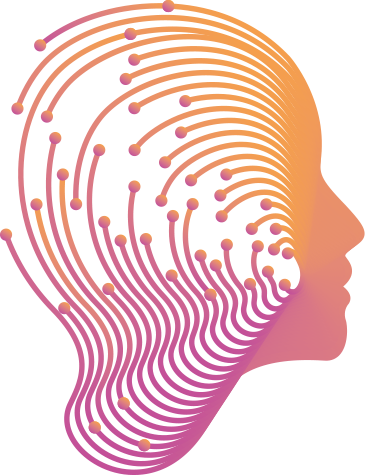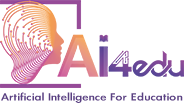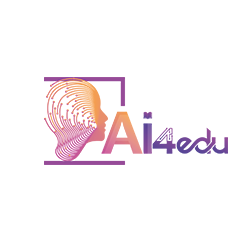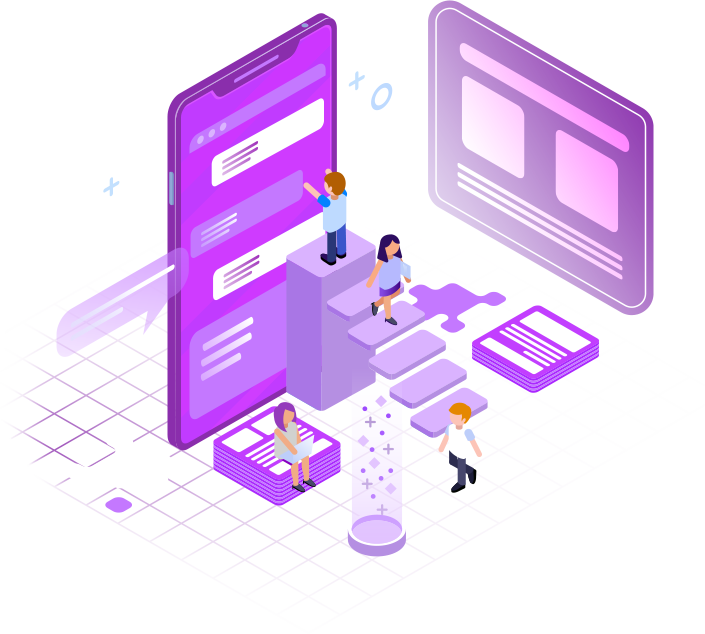Navigating The New Frontier — HumAInology, Creativity and the Code Within
Dr. Daithí Ó Murchú © October 2025
Abstract
This paper, positioned as BLOG 16 in the evolving AI4EDU series, explores the intersection of AI Singularity, STREAMS education (Ó Murchú, 2019/Appendix 1), and HumAInology (Ó Murchú, 2024/ Appendix 2) — the emerging pedagogy of human–AI creative synergy. It synthesises evidence from the transformative 2025 DEISii Coding Camps executed in Gaelic-Irish through Dublin West Education Support Centre (DWECiii), linking inclusive, multilingual, and gender-responsive pedagogies to contemporary AI frameworksiv. With a grounded base in constructioNism (Papert, 1980), and ethical AI integration, this paper maps the contours of a human–AI–environment entanglement that redefines what it means to teach, learn, and code in a disrupted and disruptive world.
- Introduction: From Singularity to HumAInology
In BLOG 2, Ó Murchú (2024)v articulated the implications of AI Singularity for reimagining teacher and student roles through constructioNism, quantum learning, and cross-reality environments. BLOG 16 now extends this vision, anchoring it in the lived realities of DEIS school communities, multilingual learners, and gender-diverse cohorts engaged in STREAMS-based coding camps across Ireland. This paper argues that the fusion of creative coding, well-being, literacy, and AI-supported learning represents not just technological evolution — but the pedagogical emergence of HumAInology: the co- agency of humans and machines within sustainable and socially embedded education.
- Pedagogical and Philosophical Foundations
Building on Papert’s (1980), Anderson and Zhang’s (2024) and Ó Murchú’s constructionism (2024), and Kumar’s (2024) quantum learning, the STREAMS modelvi offers a situated, multilingual, and sustainability-aligned expansion to traditional STEAM education. Within this framework, coding becomes a language of power and equity — especially for girls, newcomers, minorities, and learners with additional needs (DWEC,
2025). Moreover, HumanAIology (Ó Murchú, 2023) posits that ethical, empathic, and creative AI integration must foreground inclusion, diversity, and well-being.
- Executive Lens: Coding Camps as Living Labs of AI Integration
The 2025 DWEC-led coding camps, involving 54 camps across 39 schools and 1,434 students, exemplify the theoretical convergence of constructioNism and quantum assessment (Martinez, 2024). These camps transformed communities into living inquiry spaces. Library trails became data journeys. Outdoor parks were reconfigured as numeracy-rich landscapes. AI was not the centrepiece — it was the invisible scaffold that empowered curiosity, design, and metacognitive reflection (Davidson, 2024). In pairing Gaeilge (Gaelic Irish Languagevii) with coding, DEIS students developed agency not just in language and logic, but in intercultural dialogue and multimodal expression (Chang & Watson, 2024).
- Girls, Creativity and STREAMS: Rewriting the Code
Central to the success of the 2025 programme was its explicit girls-first design — not as tokenism, but as a structural invitation to leadership through creative modalities: programmable film, music, storytelling, drama, and ecological designviii. These were not
‘soft skills’: they were high-order, future-proof, and deeply agentic. Girls (and boys) in these STREAMS camps led peer debugging clinics, narrated AI-generated museum stories, and produced bilingual film scenes coded with meaning (Wilson & Garcia, 2024). Their engagement defied the attrition curve seen in traditional coding interventions.
Coding became relational, not transactional and a natural ‘part’ of the Gaelic Irish language.
- The HumAInology Equation: Creativity x Inclusion x Ethics
HumAInologyix, as advanced in this BLOG, is not a fixed methodology but an evolving ecology. It leverages AI for formative feedback and quantum diagnostics, yet centres on students’ creative meaning-making in real-world spaces. It supports universal design principles (Patel & Johnson, 2024), equitable data practices (Chen, 2024), and multilingual access to STREAMS content (Nakamura & Chen, 2024). It is where AI ceases to be a tool and becomes a co-agent in human flourishing. Nowhere was this more visible than in the ‘discover–design–debug–document’ cycle embedded across the camps.
- Recommendations and Disruptive Propositions and K12 Exemplars
Drawing from the demonstrable success of the 2025 Coding Camps (DWEC) and underpinned by the philosophical and pedagogical principles of HumAInology, five transformational recommendations are proposed for educators, policymakers, and school leaders seeking to embed ethical, inclusive, AI-enhanced learning for all children.
6.1. Embed PLACE-Based, STREAMS Learning as Core to AI-Enhanced Curricula
Practical Exemplar – K–6 (Ireland):
In a 4th-class elementary school in Galway, students used AI-driven map tools (e.g., Google Earth with AI prompts in Irish and English) to investigate biodiversity loss in their local wetlands. They combined field data collection (measuring water quality and counting native species) with coding dashboards using Scratch and CoSpaces Edu. This culminated in interactive AI-generated museum exhibits, all through Gaeilge, linking
Science, Technology, Reading, Engineering, Arts, Maths, and Sustainability (STREAMS).
K–12 Integration Tactic:
Schools should map local landmarks, libraries, parks, or food systems to STREAMS
project cycles:
Discover (local context)
Code (solution-oriented)
Reflect (culturally grounded narrative)
Share (AI-curated digital portfolios)
This transforms geography, Gaeilge, maths, and citizenship into a living, interwoven
STREAMS framework.
6.2. Scale Girls-First Coding Through Creative Modalities Across EU and Global
Partnerships
Practical Exemplar – Ages 11–14 (eTwinning Project):
Irish and European girls and boys collaborated on a “Storycode” project, using MakeCode Arcade and AI avatars to retell climate justice stories from both countries. Each group created programmable games embedded with narrative choices, voiceovers in Irish and other languages, and AI-translated subtitles. Girls took leadership roles in debugging clinics and cultural exchanges — highlighting coding as creative storytelling, not technical abstraction.
Implementation Strategy:
Prioritise film + code, music + sensors, and design + microcontrollers as valid coding pathways.
Use gender-responsive CPD to train teachers in recognising and removing
participation barriers.
Embed girls-first coding sprints in Erasmus+, eTwinning, and Climate Smart
Schools initiatives.
6.3. Apply Ethical Audit Trails for AI Use in Children’s Learning Environments
Practical Exemplar – Primary SEN Unit (Dublin):
A mixed-age SEN classroom trialled “Study Buddy” and “Teacher Mate” (AI4EDU toolsx) to support personalised numeracy. An AI Usage Log was introduced where students, teachers, and parents documented:
When AI tools were used
What they helped with
Any unexpected results or feelings
This developed not only technical fluency but digital citizenship, metacognition, and ownership.
Policy Action:
All AI use in classrooms should be transparent and documented, with children empowered to question, critique, or opt-out.
Schools should co-create “AI Responsibility Charters” with learners, families,
and teachers — updated annually.
6.4. Integrate Multilingual AI Prompts and Tools in National CPD Frameworks
Practical Exemplar – Whole-School Gaeilge CPD (Donegal):
Through DWEC’s remote CPD series, teachers co-developed bilingual AI prompt banks (e.g., Irish-English-Spanish) for classroom writing, debating, and coding projects. Using GPT-style tools with localisation layers, teachers supported newcomer and
heritage language learners, SEN pupils, and advanced Gaeilgeoirí( Gaelic Irish Speakers)
simultaneously.
Scalable CPD Model:
Create national AI Prompt Libraries tied to subjects, language levels, and student needs.
Fund teacher-led action research on prompt engineering across DEIS schools
and language clusters.
Mandate ethical AI use, UDL, and multilingualism as standard themes in all CPD
and ITE programmes.
6.5. Leverage AI to Amplify (Not Replace) Teacher Empathy, Narrative and Cultural
Anchoring
Practical Exemplar – Traveller-Roma Literacy Cluster (Dublin):
Teachers used an AI audio assistant to support reading fluency, but kept storytelling as a human-centred ritual. Children coded their own life maps using Blocklyxi, narrated by family members, while the AI tool supported syntax and pronunciation rehearsal.
Teachers curated cultural artefacts (photos, songs, sayings) that AI could not replace —
sustaining identity, not erasing it.
Ethical Imperative:
Reframe AI as a mirror, not a substitute — reflecting and honouring community stories.
Protect and platform teachers’ professional judgment and empathy as the irreducible core of education.
Build AI systems that learn from teachers’ care patterns, not just student data points.
- Conclusion: Towards a Human–AI Co-Agency in Education
This BLOG 16 repositions coding camps not merely as summer supplements, but as frontline laboratories for AI-integrated, creativity-infused education in a time of pedagogical disruption. Grounded in STREAMS and realised through Gaelic-Irish, these camps illuminate how children — especially girls from DEIS and IPA backgrounds — can lead the transition from AI literacy to HumAInology. The future is not coded for them; it is coded by them.
References
Ahmed, K. and Martinez, R. (2024) ‘Economic implications of AI integration in
education: A global perspective’, International Journal of Educational Economics, 28(3), pp. 156–178.
Anderson, J. and Zhang, L. (2024) ‘Constructionism: A new learning paradigm for the AI
age’, Educational Philosophy and Theory, 56(2), pp. 45–67.
Chang, L. and Watson, P. (2024) ‘Cultural adaptation of AI educational tools: A multi-
national study’, Journal of Cross-Cultural Education, 19(2), pp. 89–112.
Chen, M. (2024) ‘Hybrid ethics in AI-enhanced education’, Journal of Educational
Ethics, 12(1), pp. 23–41.
Davidson, R. (2024) ‘The meta-cognitive architecture of future learning’, Educational
Research Quarterly, 48(3), pp. 112–134.
DWEC (2025) Executive Release – Coding Camps 2025. Dublin: Dublin West Education
Support Centre.
Kumar, S. (2024) ‘Quantum learning in the age of AI’, International Journal of
Educational Technology, 15(2), pp. 145–168.
Martinez, E. (2024) ‘Quantum assessment frameworks for AI-enhanced learning’,
Assessment in Education, 31(4), pp. 234–256.
Nakamura, K. and Chen, L. (2024) ‘Neural-adaptive pedagogy: A new frontier in AI-
enhanced education’, Cognitive Science in Education, 15(3), pp. 234–256.
Ó Murchú, D. (2024) HumAInology: Reclaiming the Human in the Age of Artificial Intelligence. AI4EDU Research Series. Dublin: Dublin West Education Support Centre and Second You Ltd. Available at: https://ai4edu.eu/navigating-the-new-frontier/ and https://www.secondyou.eu/ (Accessed: 11 October 2025).
Ó Murchú, D. (2024) ‘ConstructioNism and the AI Singularity: Reframing Teacher and Student Roles in Quantum Learning Spaces’, AI4EDU Blog Series 2. Dublin: Dublin West Education Support Centre. Available at: https://ai4edu.eu/blog2 (Accessed: 11
October 2025).
Ó Murchú, D. (2023) ‘Breaking the educational mould – Disruption and transformation
in 21st century teaching and learning’, DEC Conference, SETU, Ireland.
Ó Murchú, D. (2019) STREAMS Education: Reclaiming Sustainability and Reading in the AI Age. BiomebioYou – NBS STREAMS Education Series. Dublin: Second You Ltd and Dublin West Education Support Centre. Available at: https://www.biomebioyou.eu/nbs-streams.html (Accessed: 11 October 2025).
Papert, S. (1980) Mindstorms: Children, Computers, and Powerful Ideas. New York: Basic Books.
Patel, S. and Johnson, M. (2024) ‘Accessibility in AI-enhanced education: Universal
design principles’, Journal of Inclusive Education Technology, 15(4), pp. 201–224.
Wilson, E. and Garcia, M. (2024) ‘Resource optimization in AI-enhanced educational
settings’, Journal of Educational Administration, 62(4), pp. 189–212.
Zohuri, B. and Mossavar-Rahmani, F. (2024) ‘The symbiotic evolution: Artificial
intelligence enhancing human intelligence’, Journal of Education Technology, 3(1), pp.
1–5.
i https://ai4edu.eu/2024/11/14/will-ai-and-ai-singularity-replace-teachers-in-the-future-a- transformative-perspective-on-educations-technological-evolution-dr-daithi-o-murchu-november-
ii https://www.gov.ie/en/department-of-education/policy-information/deis-delivering-equality-of- opportunity-in-schools/
iii https://www.dwec.ie/projects-dwec.html
iv https://padlet.com/primaryinclusiveed/deis-summer-camp-programme-2025-z2p09d1hi0tw5yjg
v https://ai4edu.eu/navigating-the-new-frontier/
vi https://www.biomebioyou.eu/streams.html
vii https://en.wikipedia.org/wiki/Irish_language
viii https://www.youtube.com/user/domurchu/featured
ix https://thcconsult.ie/the-handshake-ep-8-ai-singularity-implications-for-education-with-dr- daithi-o-murchu/
🔍 What is STREAMS Education?
STREAMS is an expanded, nature-integrated evolution of STEM/STEAM education, coined and developed by Dr. Daithí Ó Murchú, 2019 in the context of AI-integrated, place-based, and multilingual pedagogies.
STREAMS = Science, Technology, Reading (21C Multi-liteRacies), Engineering, Arts, Maths, Sustainability
It intentionally reclaims ‘Reading’ (literacy, multiliteracies, coding-as-language) and integrates Sustainability (eco-justice, biodiversity, climate action) as core epistemologies,
not add-ons. It is rooted in Nature-Based Solutions (NBS) and draws upon universal design,
critical pedagogy, and AI-augmented inquiry. https://www.biomebioyou.eu/streams.html
🌍 Educational Purpose and Impact
STREAMS offers:
Place-based, culturally rooted pedagogy (e.g., through Gaeilge/Irish or indigenous contexts)
Eco–social innovation aligned with the EU Green Deal and SDGs
Girls-first engagement via creative coding, storytelling, and STEAM design
AI-supported data storytelling on real-world problems (e.g., biodiversity dashboards, climate coding games)
It is often implemented via eTwinning, coding camps, and cross–curricular inquiry projects led by Ó Murchú under initiatives such as AI4EDU and BiomebioYou’s NBS STREAMS.
HumAInology is an emerging, transdisciplinary concept coined by Dr. Daithí Ó Murchú that encapsulates the fusion of human creativity, ethical consciousness, and artificial intelligence within dynamic educational ecosystems. It is not merely the study of AI, but rather a philosophy of co-agency — a pedagogy and epistemology grounded in the belief that human and machine intelligences can collaborate to co-create knowledge, culture, and sustainable futures.
🧠 Definition:
HumAInology is the study and practice of integrating human creativity, empathy, ethics, and cultural intelligence with artificial intelligence systems, to co-construct meaningful learning, inclusive innovation, and socially just futures.
🔑 Key Pillars of HumAInology:
Human-Centred | Artificially-Enhanced | Ethically-Governed |
Empathy & Emotional Intelligence |
Personalised Learning Pathways |
Responsible AI Use |
Cultural Identity & Language | Data-Driven Insights & Diagnostics | Transparency & Fairness |
Creative Making & Storytelling | Multimodal Processing & Feedback |
Privacy & Inclusion |
🌍 In Education:
HumAInology reimagines schools as symbiotic environments where:
Teachers act as ethical facilitators and cultural mediators, empowered by AI. Students become active knowledge co-creators, coding with purpose and creativity. AI tools are seen not as replacements, but as collaborators that amplify human potential.
STREAMS education (Science, Technology, Reading, Engineering, Arts, Maths, Sustainability) becomes the applied field where HumAInology thrives — especially in multilingual, inclusive contexts (e.g., DEIS, Gaelic-medium, refugee learners).
🎯 Use Case – Coding Camps 2025 (DWEC):
The 2025 Irish Coding Camps led by Dr. Ó Murchú exemplify HumAInology in action:
Creative Coding met Gaeilge, data storytelling, and well-being.
Girls led film+code and museum AI projects, integrating narrative and debugging.
Multilingual AI tools, PLACE-based numeracy, and ethics discussions shaped each camp day.
Outcome: A living pedagogy where children code not just algorithms, but futures —
with care, creativity, and consciousness.
🧠 Why it Matters:
In an age where AI threatens to outpace pedagogy, HumAInology reminds us that:
The future of learning is not just artificial. It is artful. It is ethical. It is human.
Graphics : Thanks to : https://app.napkin.ai/ & https://deepai.org/




